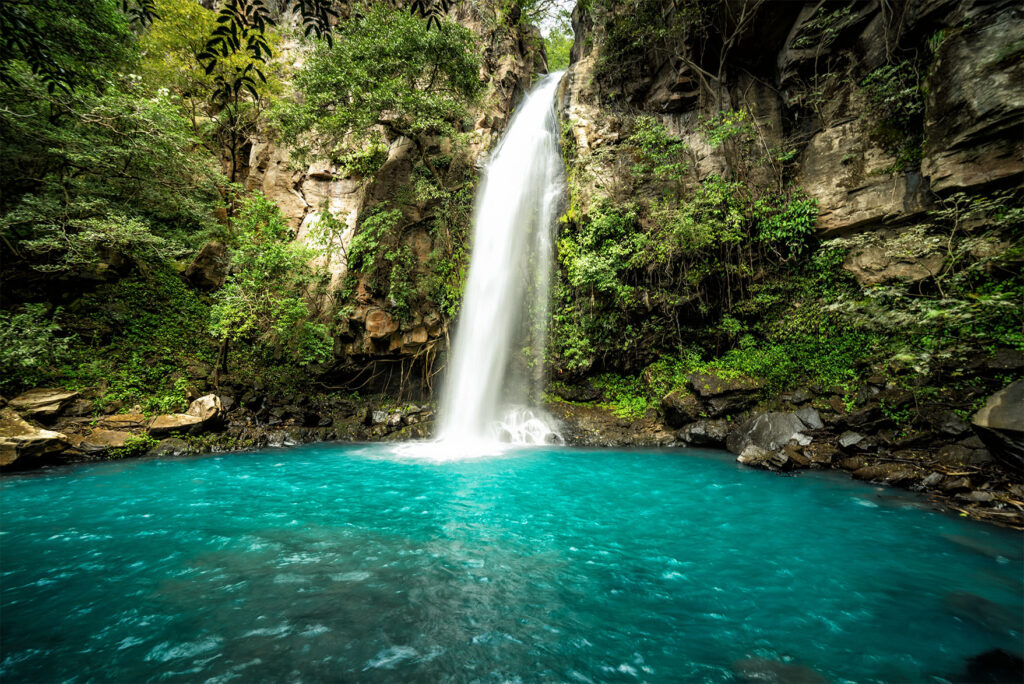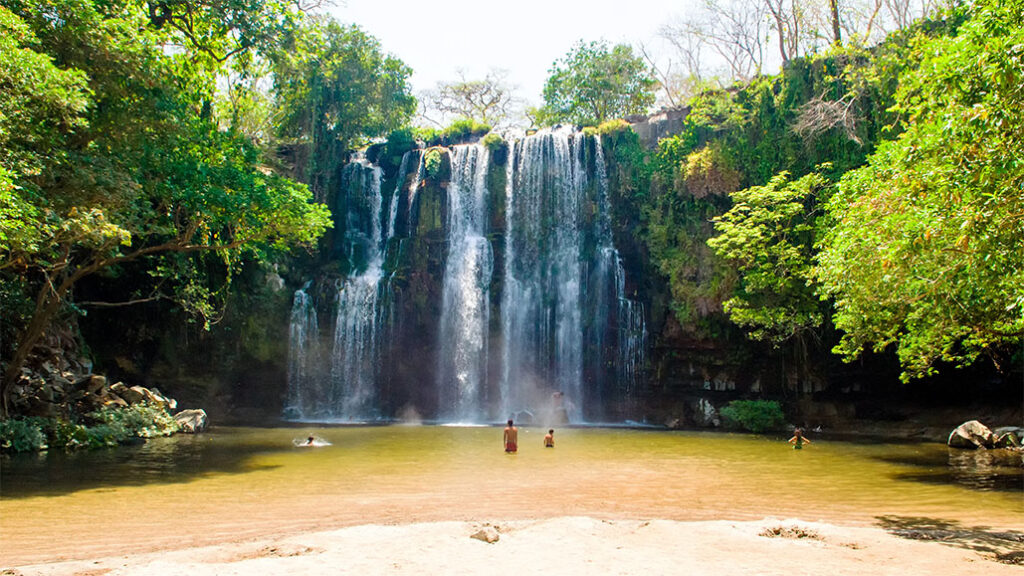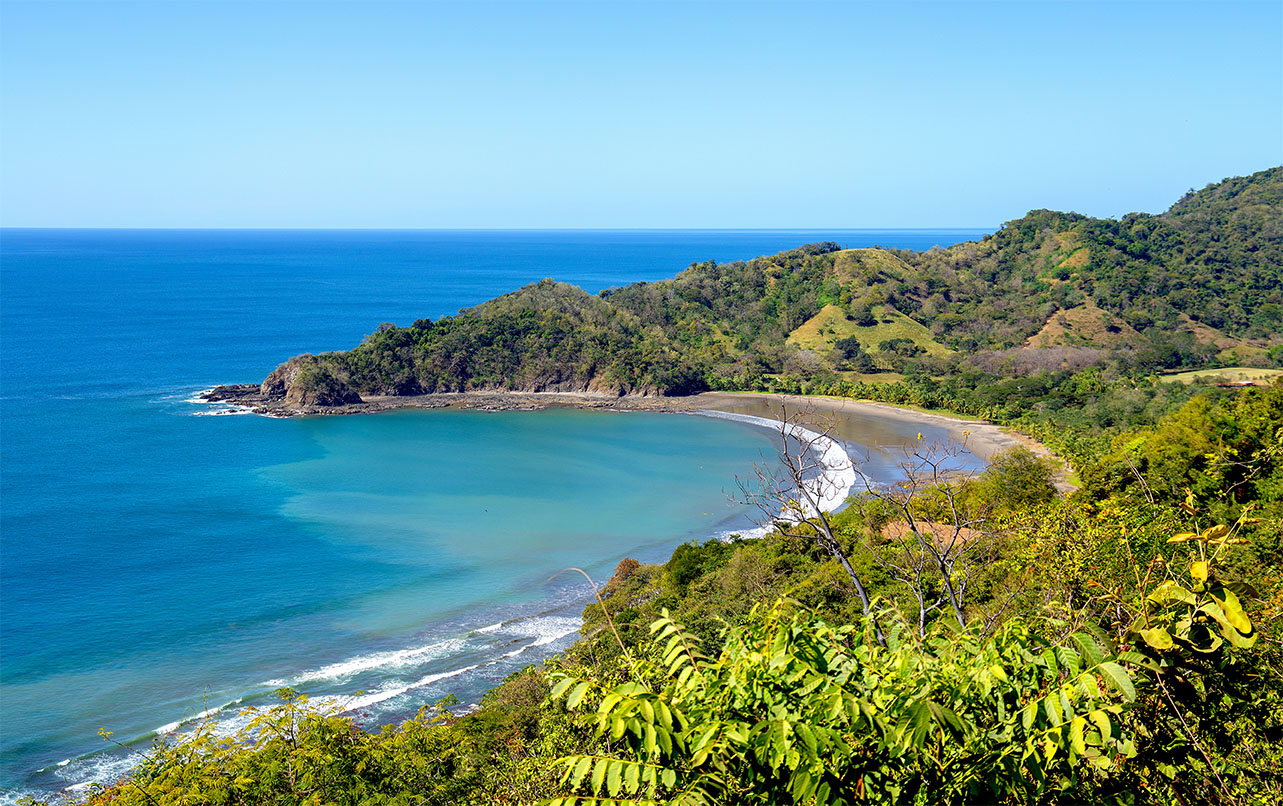Guanacaste is located in the northwestern part of Costa Rica, Central America. It’s bordered by the Pacific Ocean to the west, the Alajuela Province to the east, and Nicaragua to the north. This location gives Guanacaste a stunning coastline along the Pacific, making it famous for its beautiful beaches, surf spots, and biodiverse parklands.
The province’s capital is Liberia, which is often used as a gateway for tourists exploring this region’s natural attractions. Guanacaste’s positioning along the coast and near the border with Nicaragua provides it with a unique blend of cultural influences and a diverse range of natural landscapes, from beaches to dry tropical forests.
Guanacaste’s allure lies in its stunning diversity. From its sun-kissed beaches to its rich cultural tapestry, this region offers a perfect blend of relaxation, adventure, and cultural exploration. It’s a place where every sunrise promises a new adventure and every sunset leaves you with lasting memories.
A Little History
The history of Guanacaste is as rich as its landscapes. Once part of Nicaragua, it joined Costa Rica in 1824, a decision celebrated annually on July 25th, known as Guanacaste Day. This historical blend has created a unique cultural fusion, evident in the local music, dance, and cuisine.
Things to Do in Guanacaste

La Cangreja waterfall in Rincon de La Vieja National Park, Guanacaste
1. Beach Hopping
Guanacaste is home to some of the most beautiful beaches in Costa Rica. Playa Conchal, with its white sand and turquoise waters, is perfect for snorkeling and sunbathing. For surf enthusiasts, the waves at Tamarindo Beach are a dream come true.
2. Explore National Parks
Rincon de la Vieja National Park offers a glimpse into Costa Rica’s volcanic activity with its bubbling mud pots and hot springs. For wildlife enthusiasts, Santa Rosa National Park is a treasure trove of biodiversity, home to sea turtles, monkeys, and rare bird species.
3. Adventure Sports
Adrenaline junkies will find their haven in Guanacaste. Zip-lining through the canopies of Monteverde, windsurfing on Lake Arenal, or scuba diving at the Catalina Islands, there’s no shortage of thrilling activities.
4. Cultural Immersion
Visit the small towns like Guaitil, where you can learn about the ancient Chorotega pottery-making techniques. The local fiestas, with their bullfights, rodeos, and folk dancing, offer a glimpse into the heart of Guanacaste’s culture.
5. Gastronomy Delights
Guanacaste’s cuisine is a delightful experience. Indulge in the traditional ‘casado’, a dish combining rice, beans, plantains, salad, and a protein, or savor the fresh seafood available along the coast.
Sustainable Tourism

Llanos de Cortez Waterfall
Guanacaste is at the forefront of sustainable tourism. Efforts to preserve its natural beauty are evident in eco-friendly accommodations and tours that emphasize conservation. By choosing sustainable options, visitors contribute to the preservation of this paradise. Guanacaste is going above and beyond in their green efforts which include:
- Eco-Friendly Accommodations: Many hotels and resorts in Guanacaste have adopted eco-friendly practices. These include using renewable energy, implementing water conservation measures, and using sustainable building materials. Some accommodations are even certified by the Costa Rican Tourism Board for their sustainability efforts.
- Protected Areas and National Parks: Guanacaste is home to several national parks and protected areas, like Santa Rosa National Park and Rincón de la Vieja Volcano National Park. These areas not only preserve critical habitats for wildlife but also allow for controlled tourism that doesn’t harm the environment.
- Community-Based Tourism: There’s a strong focus on community-based tourism initiatives that empower local communities. These programs ensure that tourism benefits are shared locally and that cultural heritage is preserved. This approach includes promoting local arts, crafts, and traditions.
- Sustainable Activities: Tour operators in Guanacaste often offer eco-friendly activities, such as wildlife watching, hiking in protected areas, and educational tours about conservation. These activities are designed to minimize the impact on the environment and wildlife.
- Conservation Efforts: Efforts are being made to conserve biodiversity, including protecting sea turtles at nesting sites and reforesting areas that have been affected by deforestation. Many private reserves and conservation organizations work towards these goals.
- Waste Management and Recycling: Efforts are made to manage waste effectively and encourage recycling. This includes initiatives within the hospitality industry as well as at a community level.
- Education and Awareness: There’s a strong emphasis on educating both locals and tourists about the importance of conservation and sustainable practices. This education helps in fostering a culture of environmental respect and responsible tourism.
- Green Certification: Costa Rica has a Certification for Sustainable Tourism (CST) program, which rates businesses based on their sustainability practices. Many businesses in Guanacaste strive to achieve high CST ratings.
When to Visit
The best time to visit Guanacaste is during the dry season, from November to April. However, the green season, from May to October, brings lush landscapes and fewer tourists, offering a different kind of charm.
See You in Guanacaste
Guanacaste, Costa Rica, is a symphony of natural beauty, adventure, and cultural richness. It’s a destination that speaks to the soul of every traveler, beckoning with the promise of undiscovered wonders and unforgettable experiences. Whether you’re lounging on its pristine beaches, exploring its wild national parks, or diving into its rich cultural heritage, Guanacaste is a journey that will captivate and inspire you. As a world traveler, I can affirm that Guanacaste is not just a place you visit; it’s an experience that stays with you forever.


